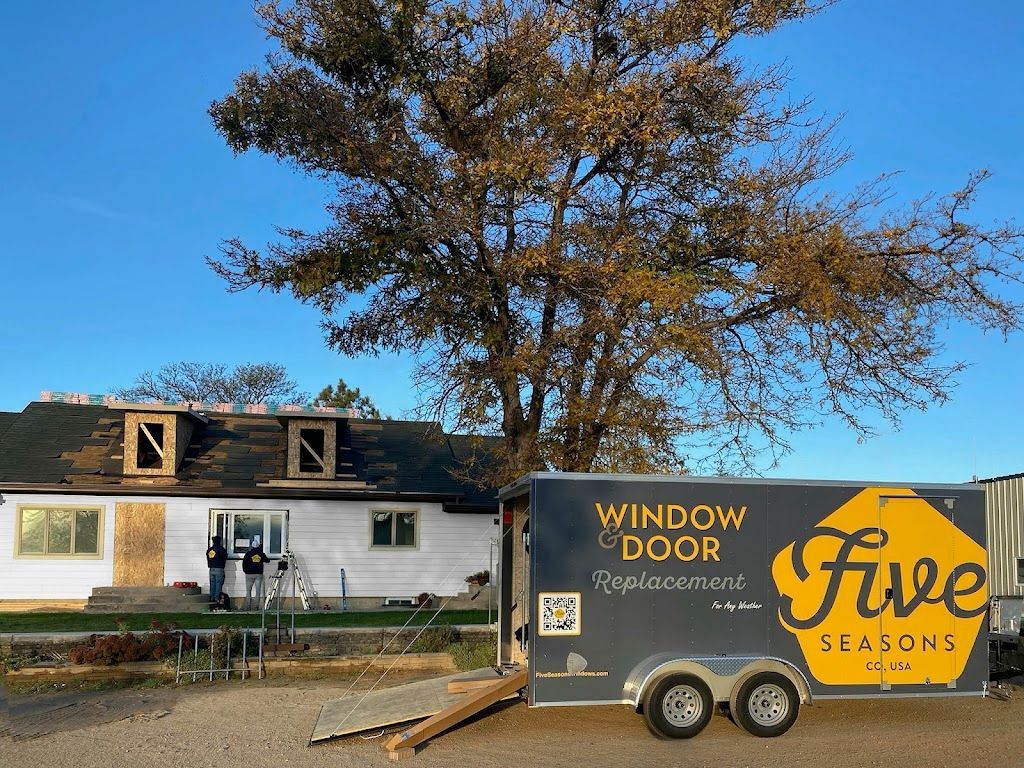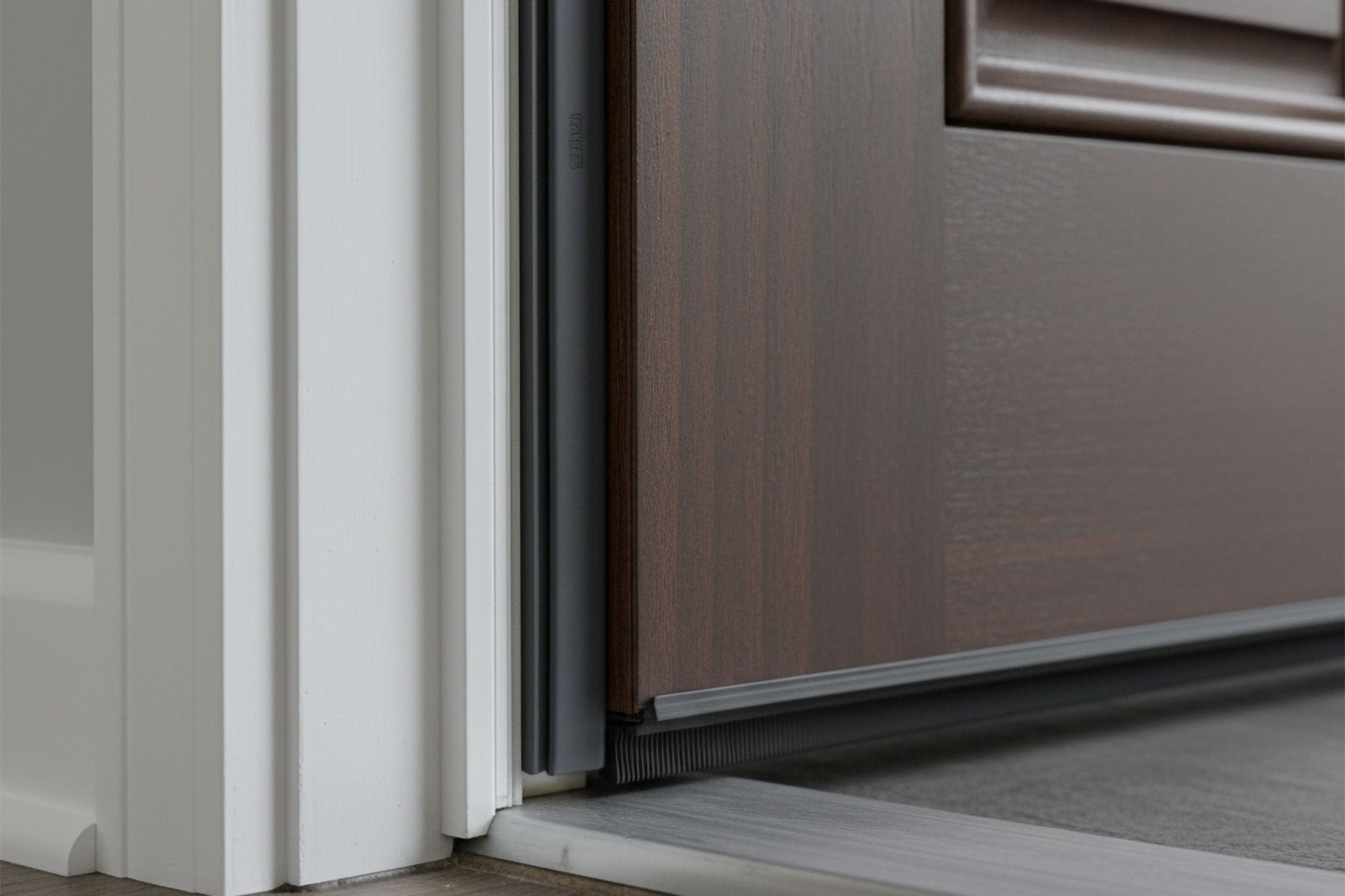Why choose entry doors with weather stripping centers on the critical protection and performance advantages these systems provide through superior air sealing, moisture barrier protection, and energy efficiency that can reduce heating and cooling costs by 10-25% annually. Weather stripping creates continuous seals around door perimeters that prevent air infiltration, water penetration, and thermal transfer while maintaining structural integrity and operational smoothness throughout varying weather conditions.
According to the Department of Energy, properly installed weather stripping on entry doors prevents up to 30% of conditioned air loss that occurs through gaps and improper sealing, with high-quality systems maintaining effectiveness for 15-20 years under normal operating conditions. The investment in weather-stripped entry doors typically pays for itself within 3-5 years through energy savings while providing enhanced comfort, security, and weather protection.
Understanding the specific protection and performance advantages of weather-stripped entry doors helps homeowners make informed decisions that prioritize long-term energy efficiency, comfort, and structural protection over basic door functionality alone.
Air Infiltration Prevention Systems
ulti-Point Seal Technology
Advanced weather stripping systems utilize multiple contact points around door frames including threshold seals, jamb weatherstripping, and header barriers that create comprehensive air infiltration prevention. These multi-layered approaches eliminate the gaps and air pathways that allow conditioned air to escape while preventing outside air from entering living spaces.
Quality weather stripping materials including EPDM rubber, silicone compounds, and brush seals maintain flexibility and compression characteristics across temperature ranges from -40°F to 140°F. This temperature stability ensures consistent sealing performance throughout seasonal changes while maintaining smooth door operation and long-term durability.
Pressure Differential Management
Weather stripping systems manage pressure differentials between interior and exterior environments by creating controlled resistance to airflow without preventing necessary ventilation. This balanced approach maintains indoor air quality while preventing energy waste through unwanted air exchange.
Properly designed weather stripping prevents the stack effect and wind-driven infiltration that forces HVAC systems to work harder maintaining comfortable temperatures. The controlled air exchange reduces system cycling frequency while improving temperature stability and humidity control throughout homes.
Moisture and Water Protection
Primary Water Barrier Functions
Entry door weather stripping serves as the primary defense against water infiltration through multiple barrier systems including drip edges, compression seals, and drainage channels. These integrated moisture management features prevent water damage to door frames, interior finishes, and structural components while maintaining weatherproof integrity.
Advanced weather stripping designs incorporate water shedding profiles and drainage provisions that direct moisture away from critical seal areas. This water management prevents freeze-thaw damage in cold climates while eliminating moisture accumulation that can cause rot, mold, and structural deterioration over time.
Humidity Control and Condensation Prevention
Weather-stripped entry doors control humidity transfer between interior and exterior environments, preventing condensation formation and moisture-related problems. The sealed environment helps maintain consistent interior humidity levels while preventing moisture infiltration during high-humidity conditions.
Effective moisture control extends beyond water exclusion to include vapor barrier properties that prevent humidity migration through door assemblies. This comprehensive moisture management protects interior finishes, electronics, and furnishings from humidity-related damage while maintaining healthy indoor air quality.
Thermal Performance Enhancement
Insulation Value Optimization
Weather stripping dramatically improves the thermal performance of entry doors by eliminating air gaps that allow heat transfer through convection. This enhanced insulation value can double or triple the effective R-value of door assemblies compared to unsealed installations.
The thermal enhancement becomes especially significant with insulated door cores where weather stripping prevents thermal bridging and air movement that would otherwise compromise insulation effectiveness. Quality sealing systems ensure that insulated doors achieve their rated thermal performance throughout their service life.
Energy Cost Reduction Mechanisms
Properly weather-stripped entry doors reduce energy costs through multiple mechanisms including reduced air infiltration, eliminated drafts, and improved HVAC efficiency. These combined effects typically result in 10-25% reduction in heating and cooling expenses for homes with significant air leakage issues.
Energy savings compound over time as weather stripping maintains sealing effectiveness while preventing gradual performance degradation common with unsealed doors. The consistent thermal barrier reduces peak energy demands while improving overall system efficiency throughout varying weather conditions.
Durability and Maintenance Benefits
Extended Door Life Through Protection
Weather stripping protects entry doors from environmental stresses including moisture exposure, temperature cycling, and debris infiltration that accelerate wear and deterioration. This protection extends door service life by 30-50% compared to unsealed installations while maintaining operational smoothness.
The protective benefits include prevention of warping, swelling, and hardware corrosion that commonly affect doors exposed to moisture and temperature extremes. Quality weather stripping systems shield door materials from environmental stresses while maintaining structural integrity and appearance over decades of service.
Reduced Maintenance Requirements
Weather-stripped entry doors require less maintenance than unsealed alternatives through protection from moisture damage, reduced hardware wear, and prevention of frame distortion. The sealed environment prevents debris accumulation and moisture infiltration that typically require frequent cleaning and repair.
Modern weather stripping materials are designed for minimal maintenance with replacement intervals of 15-20 years under normal conditions. This longevity reduces ongoing maintenance costs while ensuring consistent performance throughout the door's service life.
Security and Safety Improvements
Enhanced Physical Security
Weather stripping systems enhance entry door security through improved frame-to-door contact that strengthens resistance to forced entry attempts. The compressed seal materials provide additional resistance against impact forces while maintaining proper door alignment that prevents security vulnerabilities.
Integrated weather stripping designs often incorporate security features including reinforced seal areas and tamper-resistant installation methods. These security enhancements complement traditional locking mechanisms while providing visual indicators of attempted forced entry.
Fire Safety and Smoke Control
Quality weather stripping systems contribute to fire safety by preventing smoke infiltration and maintaining pressure barriers that can slow fire spread between interior and exterior environments. These protective features provide additional evacuation time while supporting overall home fire safety strategies.
Specialized fire-rated weather stripping materials maintain sealing properties under elevated temperatures while providing smoke barriers that protect escape routes. This enhanced safety performance exceeds basic door requirements while supporting comprehensive home protection systems.
Comfort and Indoor Air Quality
Draft Elimination and Temperature Stability
Weather-stripped entry doors eliminate drafts and cold spots that affect comfort near entryways while maintaining consistent temperature distribution throughout homes. This improved comfort extends usable space near doors while reducing hot and cold zones that affect daily living.
The consistent temperature control provided by weather stripping reduces thermal discomfort and improves overall home livability. Eliminated drafts prevent furniture placement limitations while allowing full utilization of space near entry areas.
Indoor Air Quality Protection
Effective weather stripping prevents infiltration of outdoor pollutants, allergens, and contaminants that affect indoor air quality. This filtration benefit becomes especially valuable in urban areas or regions with air quality challenges where outdoor pollutant levels exceed healthy indoor standards.
The controlled air exchange provided by weather-stripped doors supports mechanical ventilation systems while preventing unfiltered air infiltration. This balanced approach maintains healthy indoor air quality while preventing contamination from outdoor sources.
For homeowners considering entry door upgrades, understanding professional installation options ensures optimal weather stripping performance and longevity. For comprehensive information about finding qualified local contractors and service requirements, explore our detailed guide: 🔗Entry Door Installation Near Me: Local Contractors & Service Areas

People Also Ask About Why Choose Entry Doors with Weather Stripping
1. How much energy can weather stripping on entry doors actually save?
Weather stripping on entry doors typically saves 10-25% on heating and cooling costs by preventing air infiltration that forces HVAC systems to work harder maintaining comfortable temperatures. The exact savings depend on home size, local climate, and existing air leakage rates, with older homes seeing the most dramatic improvements.
For an average home spending $1,200-2,000 annually on heating and cooling, weather-stripped entry doors can save $120-500 per year through reduced energy consumption. These savings continue throughout the weather stripping's 15-20 year service life, providing substantial return on investment.
The Department of Energy estimates that proper weather sealing can reduce total home energy consumption by 5-15%, with entry doors representing a significant source of air leakage in many homes. The cumulative savings often exceed the initial door investment within 3-5 years.
2. What types of weather stripping work best for entry doors?
EPDM rubber and silicone weather stripping provide the best combination of durability, temperature resistance, and sealing effectiveness for entry doors. These materials maintain flexibility across extreme temperature ranges while providing consistent compression and recovery properties.
Compression seals work well for door jambs and headers, while sweep seals and threshold systems handle bottom sealing requirements. The best installations combine multiple weather stripping types to address different sealing challenges around the complete door perimeter.
Quality weather stripping systems from manufacturers like Marvin and ProVia integrate multiple seal types in coordinated systems that provide superior performance compared to single-component solutions. Professional installation ensures proper compression and alignment for optimal effectiveness.
3. How long does entry door weather stripping typically last?
High-quality weather stripping on entry doors typically lasts 15-20 years with proper installation and normal use conditions. Premium materials like EPDM rubber and silicone compounds resist UV degradation, temperature cycling, and compression set that cause premature failure in lower-quality products.
Environmental factors including UV exposure, temperature extremes, and door usage frequency affect weather stripping longevity. Protected installations in moderate climates often exceed 20 years, while harsh exposure conditions may require replacement after 10-15 years.
Signs that weather stripping needs replacement include visible cracks, permanent compression, hardening, or detachment from mounting surfaces. Regular inspection and timely replacement maintain energy efficiency and protection benefits throughout the door's service life.
4. Can weather stripping be added to existing entry doors?
Yes, weather stripping can often be retrofitted to existing entry doors, though the effectiveness depends on door condition, frame alignment, and available mounting surfaces. Professional assessment determines the best weather stripping options for specific door configurations and installation requirements.
Retrofit installations may require adjustments to door alignment, threshold replacement, or frame modifications to achieve proper seal compression. These modifications ensure weather stripping effectiveness while maintaining smooth door operation and appearance.
While retrofit weather stripping provides significant benefits, new doors designed with integrated weather stripping systems typically achieve superior sealing performance. The investment in new weather-stripped doors often provides better long-term value through enhanced durability and effectiveness.
5. Do weather-stripped entry doors require special maintenance?
Weather-stripped entry doors require minimal additional maintenance beyond standard door care, with weather stripping systems designed for long-term performance with minimal intervention. Regular cleaning of seal areas and periodic lubrication of moving components maintain optimal performance.
Annual inspection of weather stripping condition helps identify wear or damage before it affects sealing effectiveness. Simple maintenance tasks include cleaning debris from seal areas, checking for proper compression, and ensuring smooth door operation.
Most weather stripping problems result from improper installation or door misalignment rather than material failure. Professional installation and periodic adjustment ensure consistent performance throughout the weather stripping's service life.
Our Take
At Five Seasons Windows & Doors, serving Colorado communities as a local contractor has provided us unique insights into the value of regional expertise and personalized service for entry door installation projects. Our understanding of Colorado's climate challenges, architectural styles, and building codes allows us to recommend solutions that perform optimally in our local environment.
Local service means we're available for consultations, installations, and follow-up support without the delays and complications of distant corporate operations. Our relationships with quality door manufacturers like Marvin, ProVia, and Anlin, combined with knowledge of local supplier networks, ensure efficient project completion and competitive pricing for our Colorado customers.
We believe local contractors provide superior value through community commitment, personalized service, and regional expertise that national chains cannot replicate. The investment in local installation services supports community businesses while ensuring accessible, reliable support throughout your door's service life.
Final Takeaway
At Five Seasons Windows & Doors, our extensive experience installing entry doors throughout Colorado has consistently demonstrated the dramatic performance differences between weather-stripped and standard door systems. The energy savings, comfort improvements, and protection benefits we observe make weather stripping an essential feature rather than an optional upgrade for serious homeowners.
Colorado's extreme weather conditions including intense UV exposure, dramatic temperature swings, and severe storms make weather stripping particularly valuable for entry door performance and longevity. Our installations of quality weather-stripped doors from manufacturers like Marvin, ProVia, and Anlin consistently outperform standard doors in energy efficiency, comfort, and durability.
We believe weather stripping represents one of the most cost-effective performance enhancements available for entry doors, providing immediate comfort benefits and long-term energy savings that justify any additional investment. The protection and performance advantages make weather-stripped doors the smart choice for homeowners prioritizing efficiency, comfort, and long-term value.
Final Takeaway
Why choose entry doors with weather stripping comes down to the substantial protection and performance advantages these systems provide through comprehensive air sealing, moisture protection, thermal enhancement, and comfort improvements that transform entry door functionality. Weather stripping converts basic doors into high-performance building components that contribute significantly to home energy efficiency and comfort.
The combination of energy savings, enhanced comfort, improved durability, and comprehensive protection makes weather-stripped entry doors a valuable investment that pays dividends through reduced operating costs and enhanced daily living quality. Understanding these advantages helps homeowners recognize weather stripping as essential rather than optional for optimal door performance.
Professional installation of quality weather-stripped entry doors delivers immediate comfort improvements and energy savings while providing decades of reliable protection and performance that justify the investment through superior functionality and long-term value.
Get Started Today
Five Seasons Windows & Doors is Colorado’s top-rated local window company with 230+ 5-star reviews. We offer expert advice, no-pressure quotes, and flexible project options — including phased installs. Schedule your consult today.




